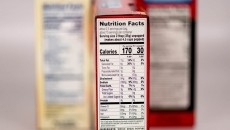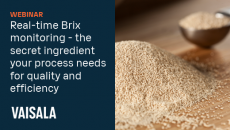Maryland eyes artificial food color ban
Two bills are scheduled to be considered at hearings in Annapolis on Wednesday, including one that would require food manufacturers to add a warning label prior to an outright ban in 2012, and another that would prohibit the use of the colors in school foods.
If the legislation is approved, food products containing the colors would be required to carry the label: “Warning: The color additives in this food may cause hyperactivity and behavior problems in some children” effective from January 1, 2010, and be phased out by December 31, 2011.
The colors affected are Red 40, Yellow 5, Yellow 6, Blue 1, Blue 2, Green 3, Orange B, and Red 3.
Backing the bills
The Center for Science in the Public Interest (CSPI) has given its backing to the bills, which were introduced by Senator Norman Stone, and CSPI’s senior nutritionist David Schardt has said that he will testify at the hearings in favor of their adoption.
He said: “These dyes may be cheaper than real food ingredients, but given the troubling evidence concerning their impact on our children, I do not see how we can continue to justify their use.”
Synthetic food colorings have been the cause of controversy in the US since the 1970s, when pediatrician Dr Feingold first found a link with children’s behavior. But they came under fierce scrutiny again in September 2007 after the results of a British study from the University of Southampton were published in medical journal The Lancet. The researchers looked at the effects of mixes of additives on 297 children aged three to nine, and concluded that artificial food colors and additives exacerbate hyperactive behavior in children at least up to middle childhood.
European criticism
The study caused a swell of resistance to the colors and, last July, European legislators voted that products containing them should be labeled “may have an adverse effect on activity and attention in children.”
This decision has been criticized, however, as the scientific opinion of the European Food Safety Authority had originally concluded that the Southampton study gave no basis for changing acceptable daily intakes of the additives. This was largely because the children who took part in the trial were given cocktails of additives, making it impossible to ascertain which were responsible for the perceived hyperactivity effect.
Meanwhile, some industry commentators have called the labeling a ‘de facto ban’, since no manufacturer would wish to use such wording on products for children.
Three of the six colors examined in the Southampton study are already banned in the US, although several of the other colors Senator Stone is looking to ban are already prohibited for food use in many European countries.
Blue 1, for example, is banned in Belgium, France, Germany, Sweden, Austria, Norway and Switzerland, and Green 3 was banned across Europe after it was linked to the development of bladder tumors.















